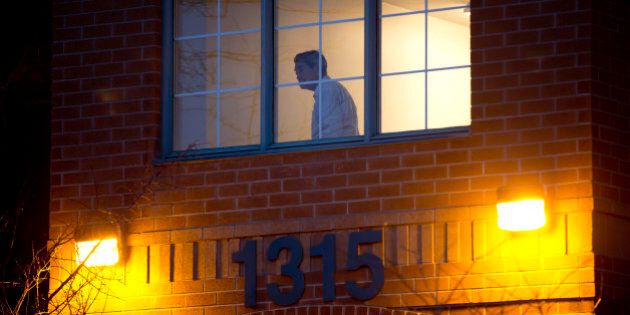
We don't know what started the fire that took place earlier this month at a Toronto Community Housing (TCHC) seniors apartment building in Scarborough. The cause of the fire, which resulted in the deaths of three seniors, is still under investigation. But other emergencies in social housing communities have been traced back to vulnerable tenants, and the struggles they were experiencing.
Social housing communities are increasingly home to the most vulnerable members of our communities. The private rental market has left many renters behind, meaning that for families fleeing domestic violence, individuals wrestling with mental health and addictions challenges, and aging seniors on fixed incomes, social housing may be the only available option.
Ensuring that social housing tenants have the support services they need is a critical part of preventing future tragedies.
When vulnerable tenants can't access the support they need, serious problems can arise. Tenants may have difficulty paying their rent, maintaining their unit in a safe condition, or taking care of their mental and physical health. Many of the 75,000 seniors that live in social housing, for example, do not have access to sufficient home care services. Further research has shown that aging residents, who may be experiencing dementia or cognitive challenges, have no one to assist them with basic activities of daily living.
Social housing providers were created to provide affordable housing to residents. As such, they do not receive any dedicated government funding for support workers or community outreach. It's become clear, though, that both the public and the government now expect these organizations to go above and beyond their traditional role as landlords, and to assist at-risk tenants.
Ensuring that social housing tenants have the support services they need is a critical part of preventing future tragedies. These supports can be provided by the social housing organization itself, or through partnerships with community agencies. At the same time, upgrading emergency response systems like lighting systems and automatic sprinklers can help when crises do occur. But these capital improvements are expensive and housing providers' budgets are already strained keeping up aging buildings.
A dedicated government program to provide support services to vulnerable social housing tenants would save money and build stronger communities. Research has shown that roughly one per cent of the population accounts for 30 per cent of health care spending, often through emergency room use and hospital beds. Individuals who are struggling with poverty, mental health and addictions challenges, and homelessness or housing instability are often over-represented in that one per cent.
This was the case at 291 George St. in Toronto, where a successful pilot project transformed one of TCHC's most notorious buildings. The building primarily houses single men in bachelor apartments, many of whom have experienced addiction, homelessness, and mental health challenges. Provincial funding made it possible for TCHC to upgrade building features and to partner with Houselink Community Homes and the Fred Victor Centre to provide on-site staff to assist residents and connect them to services.
The results of the pilot project are striking -- calls to police dropped by over 50 per cent; units with major clutter and fire hazards were reduced to zero; dozens of tenants were connected with a family doctor, improving their health outcomes; and vacancy rates in the building dropped by half. Participation in community activities -- like tenant meetings, gardening, and holiday celebrations -- soared.
For social housing providers to be truly effective, this level of on-site support is often necessary. Having support staff located within buildings makes it possible for them to connect directly with vulnerable tenants, and to keep an eye out for developing problems. It also ensures that organizations are aware of which safety features need to be upgraded, and how best to improve the day-to-day health and security of their residents.
Social housing providers want their tenants to be able to grow and thrive in a safe environment where their support needs are fully met. It's now up to the government to make that a reality.
Follow HuffPost Canada Blogs on Facebook
ALSO ON HUFFPOST:
